5-METHYLQUINOXALINE
Synonym(s):Nutty oxaline
- CAS NO.:13708-12-8
- Empirical Formula: C9H8N2
- Molecular Weight: 144.17
- MDL number: MFCD00012335
- EINECS: 237-246-5
- SAFETY DATA SHEET (SDS)
- Update Date: 2024-12-18 14:07:02
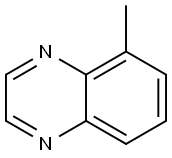
What is 5-METHYLQUINOXALINE?
Description
5-Methylquinoxaline has a burnt, roasted, nutty, roasted com, coffee odor.
Chemical properties
Amber liquid
Chemical properties
5-Methylquinoxaline has a burnt, roasted, nutty, roasted corn, coffee odor
Occurrence
Reported found in coffee and roasted almonds
The Uses of 5-METHYLQUINOXALINE
5-Methylquinoxaline was used in the synthesis of 1,12-diphenyl-5-methyl-1,12,12a,12b-tetrahydrobis[1,2,4]triazolo[4,3-a:3′,4′-c]quinoxaline bis-cycloadducts.
Definition
ChEBI: A quinoxaline derivative in which the quinoxaline (1,4-naphthyridine) skeleton is substituted at C-5 with a methyl group.
Taste threshold values
Taste characteristics at 2 ppm: nutty, roasted, peanut and pyrazine-like with yeasty, corn-chip nuance.
General Description
5-Methylquinoxaline has been identified as one of the key volatile aroma compounds in roasted almonds{170] and roasted coffee.
Properties of 5-METHYLQUINOXALINE
| Melting point: | 20-21 °C (lit.) |
| Boiling point: | 120 °C/15 mmHg (lit.) |
| Density | 1.125 g/mL at 25 °C |
| refractive index | n |
| FEMA | 3203 | 5-METHYLQUINOXALINE |
| Flash point: | >230 °F |
| storage temp. | Sealed in dry,Room Temperature |
| form | neat |
| pka | 1.40±0.30(Predicted) |
| Specific Gravity | 1.112 |
| color | Light yellow to Yellow to Orange |
| Odor | at 0.10 % in dipropylene glycol. toasted roasted corn nutty coffee burnt |
| JECFA Number | 798 |
| CAS DataBase Reference | 13708-12-8(CAS DataBase Reference) |
| EPA Substance Registry System | Quinoxaline, 5-methyl- (13708-12-8) |
Safety information for 5-METHYLQUINOXALINE
| Signal word | Warning |
| Pictogram(s) |
 Exclamation Mark Irritant GHS07 |
| GHS Hazard Statements |
H315:Skin corrosion/irritation H319:Serious eye damage/eye irritation H335:Specific target organ toxicity, single exposure;Respiratory tract irritation |
| Precautionary Statement Codes |
P261:Avoid breathing dust/fume/gas/mist/vapours/spray. P264:Wash hands thoroughly after handling. P264:Wash skin thouroughly after handling. P271:Use only outdoors or in a well-ventilated area. P280:Wear protective gloves/protective clothing/eye protection/face protection. P302+P352:IF ON SKIN: wash with plenty of soap and water. P305+P351+P338:IF IN EYES: Rinse cautiously with water for several minutes. Remove contact lenses, if present and easy to do. Continuerinsing. |
Computed Descriptors for 5-METHYLQUINOXALINE
| InChIKey | CQLOYHZZZCWHSG-UHFFFAOYSA-N |
New Products
Tert-butyl bis(2-chloroethyl)carbamate (S)-3-Aminobutanenitrile hydrochloride N-Boc-D-alaninol N-BOC-D/L-ALANINOL 3-(2,4-Dimethoxybenzyl)dihydropyrimidine-2,4(1H,3H)-dione 7-Bromo-1H-indazole N-octanoyl benzotriazole 3,4-Dibenzyloxybenzaldehyde 4-Hydrazinobenzoic acid Electrolytic Iron Powder Fmoc-Val-Cit-PAB 1,1’-CARBONYLDIIMIDAZOLE R-2-BENZYLOXY PROPIONIC ACID 4-HYDROXY BENZYL ALCOHOL 1,1’-CARBONYLDI (1,2-4 TRIAZOLE) S-2-CHLORO PROPIONIC ACID (2-Hydroxyphenyl)acetonitrile 4-Bromopyrazole 5-BROMO-2CYANO PYRIDINE 5,6-Dimethoxyindanone 5-broMo-2-chloro-N-cyclopentylpyriMidin-4-aMine 1-(4-Methylphenylsulfonyl)-1H-1,2,3-benzotriazole 1-(2-Chlorobenzyl)-4-nitro-1H-pyrazole 1-(2-Nitrophenyl)-4-phenylpiperazineRelated products of tetrahydrofuran
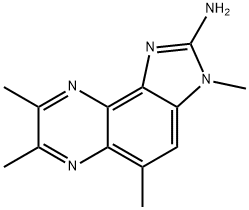
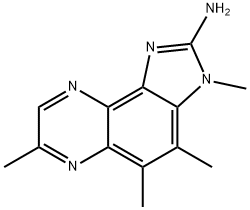

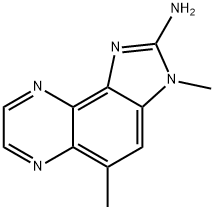
![6-(4-METHOXYPHENYL)BENZO[A]PHENAZIN-5-OL](https://img.chemicalbook.in/StructureFile/ChemBookStructure3/GIF/CB2132435.gif)
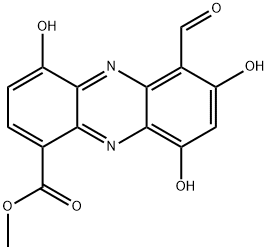
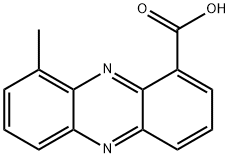
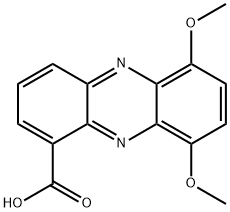
You may like
-
 5-Methylquinoxaline CAS 13708-12-8View Details
5-Methylquinoxaline CAS 13708-12-8View Details
13708-12-8 -
 5-Methylquinoxaline CAS 13708-12-8View Details
5-Methylquinoxaline CAS 13708-12-8View Details
13708-12-8 -
 Ste-Glu-AEEA-AEEA-OSUView Details
Ste-Glu-AEEA-AEEA-OSUView Details
1169630-40-3 -
 1446013-08-6 Fmoc-His-Aib-OH TFA 98%View Details
1446013-08-6 Fmoc-His-Aib-OH TFA 98%View Details
1446013-08-6 -
 127464-43-1 99%View Details
127464-43-1 99%View Details
127464-43-1 -
 Chloro Uracil 99%View Details
Chloro Uracil 99%View Details
1820-81-1 -
 2-ETHYLPYRIDINE 100-71-0 99%View Details
2-ETHYLPYRIDINE 100-71-0 99%View Details
100-71-0 -
 13162-05-5 99%View Details
13162-05-5 99%View Details
13162-05-5
Statement: All products displayed on this website are only used for non medical purposes such as industrial applications or scientific research, and cannot be used for clinical diagnosis or treatment of humans or animals. They are not medicinal or edible.